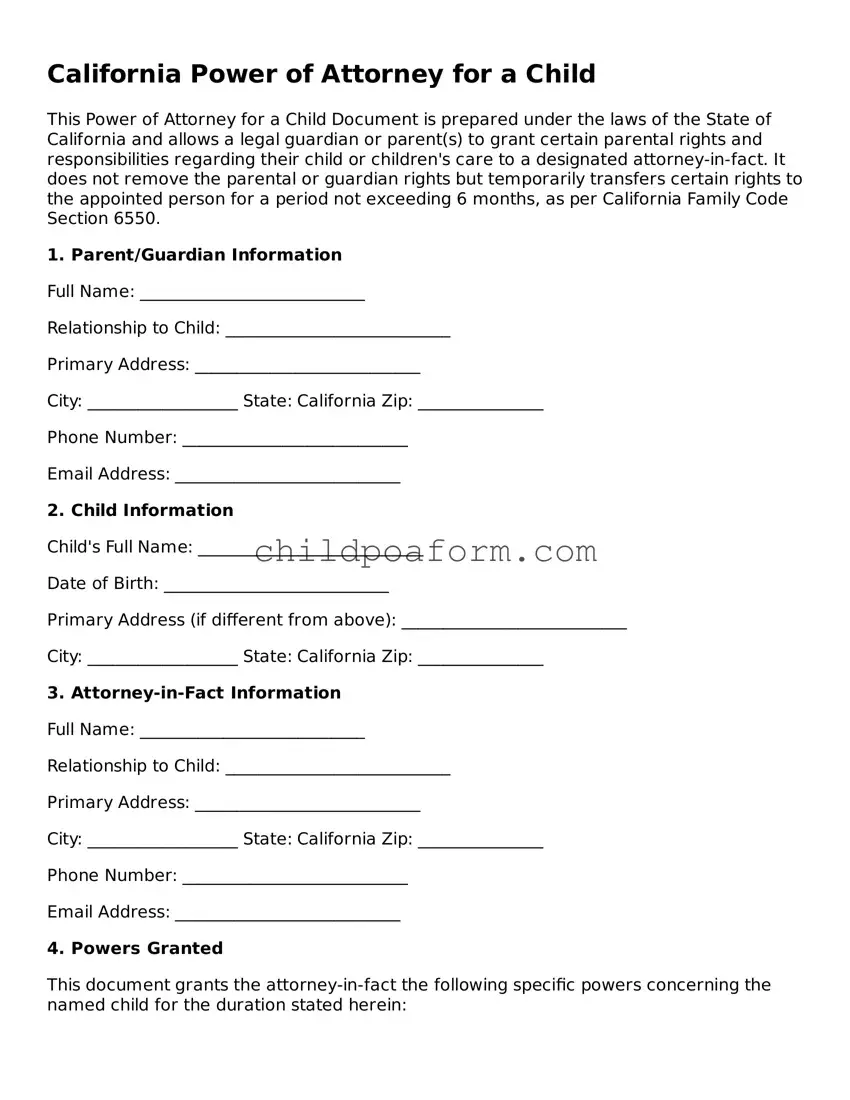Instructions on Utilizing California Power of Attorney for a Child
When a parent or guardian is unable to make decisions or care for their child, whether due to travel, illness, or other circumstances, a Power of Attorney (POA) for a Child can be an invaluable document. This legal form allows a parent or guardian to grant another trusted adult the authority to make decisions and act on behalf of their child temporarily. To ensure this document is filled out correctly, it’s essential to follow step-by-step instructions meticulously, as the welfare and safety of the child is of utmost importance.
- Start by entering the date the Power of Attorney will become effective at the top of the form.
- Fill in the full names and addresses of both the parent(s) or legal guardian(s) granting the power and the person(s) who will be granted the power of attorney.
- Specify the child’s full name and date of birth to clearly identify whom the POA concerns.
- Detail the specific powers granted under this POA. This may include decisions related to the child's education, healthcare, and general welfare.
- Include any special instructions or limitations to the powers granted, if applicable. This step is crucial for tailoring the POA to the specific needs and wishes of the parent(s) or guardian(s).
- Indicate the duration of the Power of Attorney. If it is to remain in effect indefinitely, state this clearly. Otherwise, provide the exact dates of the effectivity period.
- Have the parent(s) or legal guardian(s) sign and date the document in front of a notary public to ensure its legality and enforceability.
- The person receiving the power of attorney should also sign and date the form, acknowledging their acceptance of the responsibilities granted to them.
- Finally, have the document notarized to complete the process. The notary public will fill out their section, affix their seal, and sign the document.
After the Power of Attorney for a Child form is duly completed and notarized, it grants the designated adult the authority to make important decisions on behalf of the child within the scope defined by the document. It's vital to keep the original document in a secure yet accessible place and provide copies to relevant parties, such as schools and healthcare providers, as needed. In this way, the child’s needs can be met seamlessly, even in the parent's or guardian's absence.
